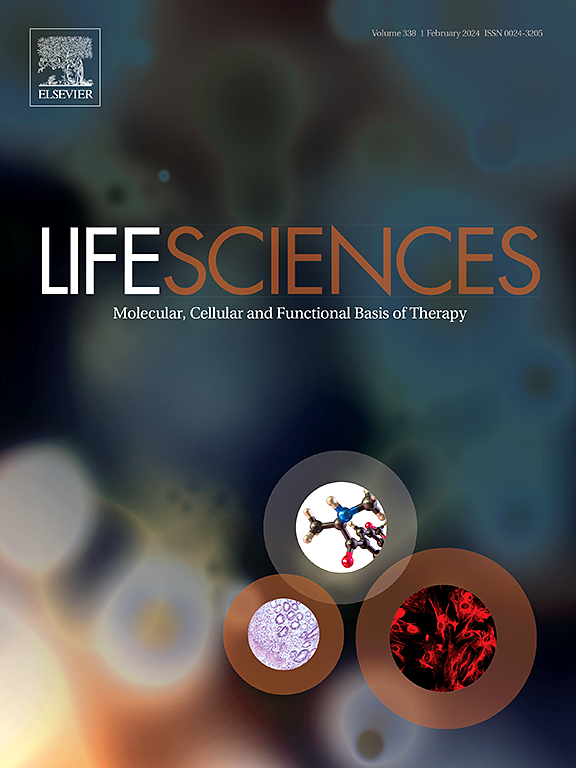DDIT4 可促进红细胞分化,并与 SIPA1 相互配合,调节高海拔红细胞增多症骨髓中红细胞的增殖。
IF 5.2
2区 医学
Q1 MEDICINE, RESEARCH & EXPERIMENTAL
引用次数: 0
摘要
红细胞增多症能适度提高血液的携氧能力,被认为是从低海拔地区适应高海拔地区的一种特征性反应。然而,红细胞增多症也可能过度,导致适应不良综合症,如高原多血症(HAPC)。骨髓中红细胞的分化或增殖增加可能是导致外周红细胞聚集的关键因素。然而,对高海拔红细胞增多症骨髓中的红细胞调节机制仍缺乏足够系统的观察。我们利用单细胞转录测序对长期缺氧后的骨髓细胞进行了表征,发现骨髓红细胞增多症与处于红系分化末期的Baso-E、Poly-E和Ortho-E细胞的积累有关。通过分析红系分化细胞中不同基因的表达和定位,我们证实 DDIT4 的表达定位于晚期分化的红细胞,包括 Baso-E、Poly-E 和 Ortho-E,其表达在缺氧暴露下显著增强。我们证实过表达DDIT4可促进K562细胞分化,并通过IP pull-down相互作用蛋白图谱发现,DDIT4可能通过与SIPA1相互作用参与调控细胞周期,促进红细胞增殖,并可能参与HAPC。本文章由计算机程序翻译,如有差异,请以英文原文为准。
DDIT4 promotes erythroid differentiation and coordinates with SIPA1 to regulate erythroid proliferation in bone marrow of high altitude erythrocytosis
Erythrocytosis moderately enhances the oxygen-carrying capacity of the blood and is considered a characteristic response of individuals adapting from low-altitude regions to high-altitude regions. Nevertheless, erythrocytosis can also turn excessive and result in maladaptive syndromes, such as high altitude polycythemia (HAPC). The increased differentiation or proliferation of erythroid cells in the bone marrow may be a crucial factor leading to accumulation of peripheral erythroid cells. However, the mechanism of erythroid regulation within the bone marrow of high-altitude erythrocytosis remains insufficiently systematically observed. We utilized single-cell transcription sequencing to characterize bone marrow cells following chronic hypoxic exposure and found that bone marrow erythrocytosis is associated with the accumulation of Baso-E, Poly-E, and Ortho-E cells at the terminal stage of erythroid lineage differentiation. Through analysis of differential gene expression and localization in differentiated cells within the erythroid lineage, we confirmed that DDIT4 expression was localized in advanced differentiated erythroblast including Baso-E, Poly-E and Ortho-E, its expression was significantly enhanced by hypoxia exposure. We demonstrated that overexpression of DDIT4 could promote K562 cell differentiation, and through the IP pull-down interaction protein profile, we found that DDIT4 might participate in regulating the cell cycle by interacting with SIPA1 to promote the proliferation of erythroid cells and may be involved in HAPC.
求助全文
通过发布文献求助,成功后即可免费获取论文全文。
去求助
来源期刊

Life sciences
医学-药学
CiteScore
12.20
自引率
1.60%
发文量
841
审稿时长
6 months
期刊介绍:
Life Sciences is an international journal publishing articles that emphasize the molecular, cellular, and functional basis of therapy. The journal emphasizes the understanding of mechanism that is relevant to all aspects of human disease and translation to patients. All articles are rigorously reviewed.
The Journal favors publication of full-length papers where modern scientific technologies are used to explain molecular, cellular and physiological mechanisms. Articles that merely report observations are rarely accepted. Recommendations from the Declaration of Helsinki or NIH guidelines for care and use of laboratory animals must be adhered to. Articles should be written at a level accessible to readers who are non-specialists in the topic of the article themselves, but who are interested in the research. The Journal welcomes reviews on topics of wide interest to investigators in the life sciences. We particularly encourage submission of brief, focused reviews containing high-quality artwork and require the use of mechanistic summary diagrams.
 求助内容:
求助内容: 应助结果提醒方式:
应助结果提醒方式:


